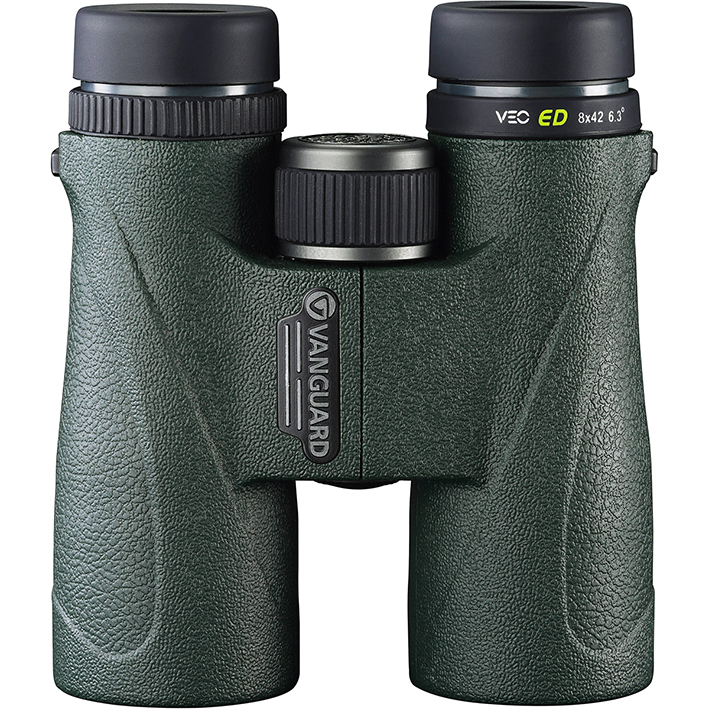Vanguard VEO ED 8x42 binocular
It has been just over four years since Vanguard last launched any new ED binoculars and the company has seized on the opportunity to deliver a new lightweight, low-cost model that represents an extension to the established ranges, Endeavour ED, ED II and ED IV. Launched in August, the VEO ED comprises two models – 8x42 and 10x42 – which are a full £50 less expensive than the basic Endeavour ED models.
I trialled the 8x42 which, with 110 m at 1,000 m, has the wider field of view of the two models, but this is lower than the 122 m found on the equivalent Endeavour ED. This is a nice, light, relatively compact binocular, engineered with a carbon-composite chassis to keep weight to a minimum. Its rubber armour covering is from Mitsubishi, a name more commonly associated with production of heavy-duty rubber car mats, which augurs well for durability. It’s dual textured, non-slip and neatly contoured to maximise grip and this is one of the few low-cost binoculars I have encountered in which the strap lugs are set as close as possible to the end of the ocular, thereby increasing the comfort factor by allowing the user to keep the index finger virtually straight when focusing.

I liked the fast-focusing mechanism, in which less than three-quarters of an anticlockwise turn of the milled rubber-covered wheel takes the image from a close-focus distance of 2.5 m to infinity. The same rubber milling covers the dioptre ring, located on the right ocular. This is a simple twist-and-turn affair, with no means of locking at the desired setting, although there is enough turning resistance to prevent accidental displacement once set.
I found the supple rubber-covered eyecups pleasantly comfortable. These twist out, ‘soft-locking’ in one intermediate position, approximately halfway between full extension and retraction. The only disadvantage in extending them was, to my eyes, a reduction in the field of view, which is not ideal, given the already relatively narrow parameter of this area.
The optical specification consists of extra-low dispersion glass, phase-corrected Bak4 prisms and fully multi-coated lenses – a combination designed to enhance the image. So, how does it all add up? Returning to that field of view, its conservative aspect has the advantage of ensuring the image remains sharp to the edges and that any distortion through curvature is negligible. Typically, I found more chromatic aberration in the outer 30% of the field than in the middle, where it is still present but at a reduced level.
In addition to the retained sharpness, there is plenty of colour contrast, underpinned by a warm tone to the image in general. This was particularly evident in bringing out the rich buff and sandy tones of the group of migrant Whinchats I was fortunate to run into during a foray to one of my local patches. I was also able to appreciate the fresh, bright yellow and green hues of juvenile Willow Warblers as they moved through the foliage at the same migrant hot-spot.
For an entry-level binocular, the VEO ED 8x42 ticks a good number of boxes; it also comes with a flexible, articulated rainguard, detachable rubber objective covers, a soft, padded neck-strap and a supple carry case.
Further info
- Price: £200
- Size: 146x124 mm
- Weight: 640 g
- Field of view: 110 m at 1,000 m
- Light transmission: 88%
- Close focus: 2.5 m
- Gas-filled: yes
- Waterproof: yes
- Guarantee: 10 years (on registration)
Verdict
+ Image remains sharp to edge of field
+ Plenty of colour contrast
- Some chromatic aberration across whole field


